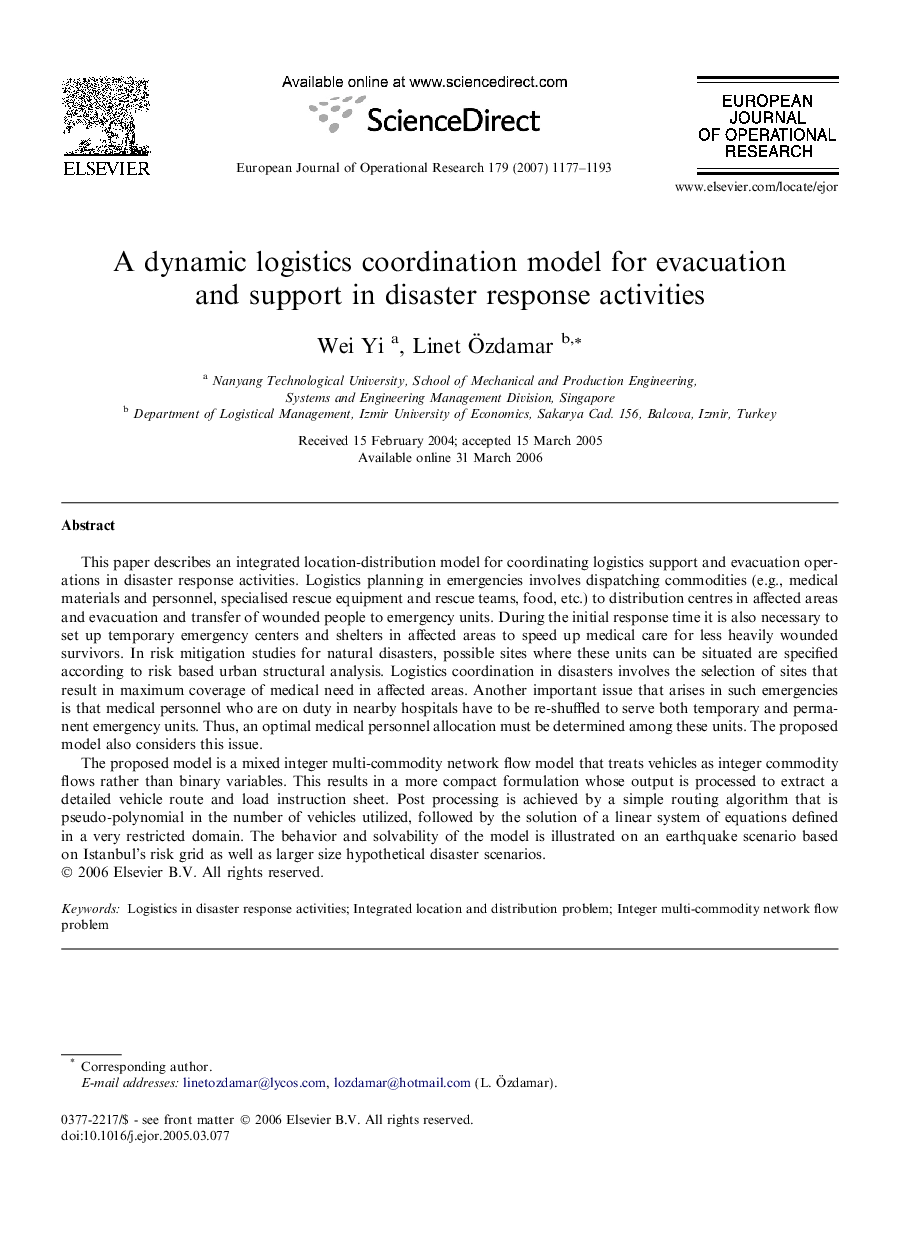| کد مقاله | کد نشریه | سال انتشار | مقاله انگلیسی | نسخه تمام متن |
|---|---|---|---|---|
| 483181 | 1446198 | 2007 | 17 صفحه PDF | دانلود رایگان |

This paper describes an integrated location-distribution model for coordinating logistics support and evacuation operations in disaster response activities. Logistics planning in emergencies involves dispatching commodities (e.g., medical materials and personnel, specialised rescue equipment and rescue teams, food, etc.) to distribution centres in affected areas and evacuation and transfer of wounded people to emergency units. During the initial response time it is also necessary to set up temporary emergency centers and shelters in affected areas to speed up medical care for less heavily wounded survivors. In risk mitigation studies for natural disasters, possible sites where these units can be situated are specified according to risk based urban structural analysis. Logistics coordination in disasters involves the selection of sites that result in maximum coverage of medical need in affected areas. Another important issue that arises in such emergencies is that medical personnel who are on duty in nearby hospitals have to be re-shuffled to serve both temporary and permanent emergency units. Thus, an optimal medical personnel allocation must be determined among these units. The proposed model also considers this issue.The proposed model is a mixed integer multi-commodity network flow model that treats vehicles as integer commodity flows rather than binary variables. This results in a more compact formulation whose output is processed to extract a detailed vehicle route and load instruction sheet. Post processing is achieved by a simple routing algorithm that is pseudo-polynomial in the number of vehicles utilized, followed by the solution of a linear system of equations defined in a very restricted domain. The behavior and solvability of the model is illustrated on an earthquake scenario based on Istanbul’s risk grid as well as larger size hypothetical disaster scenarios.
Journal: European Journal of Operational Research - Volume 179, Issue 3, 16 June 2007, Pages 1177–1193